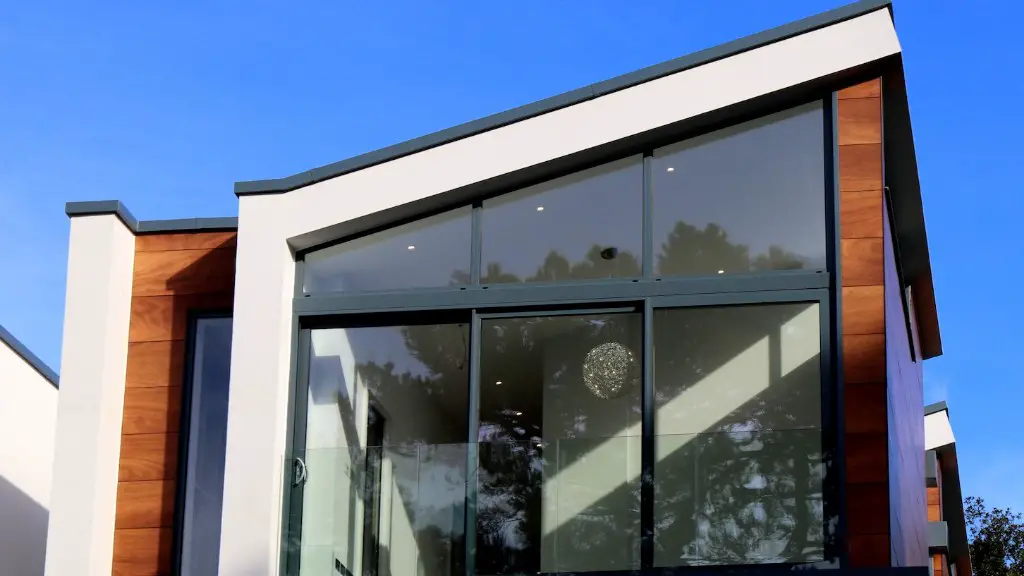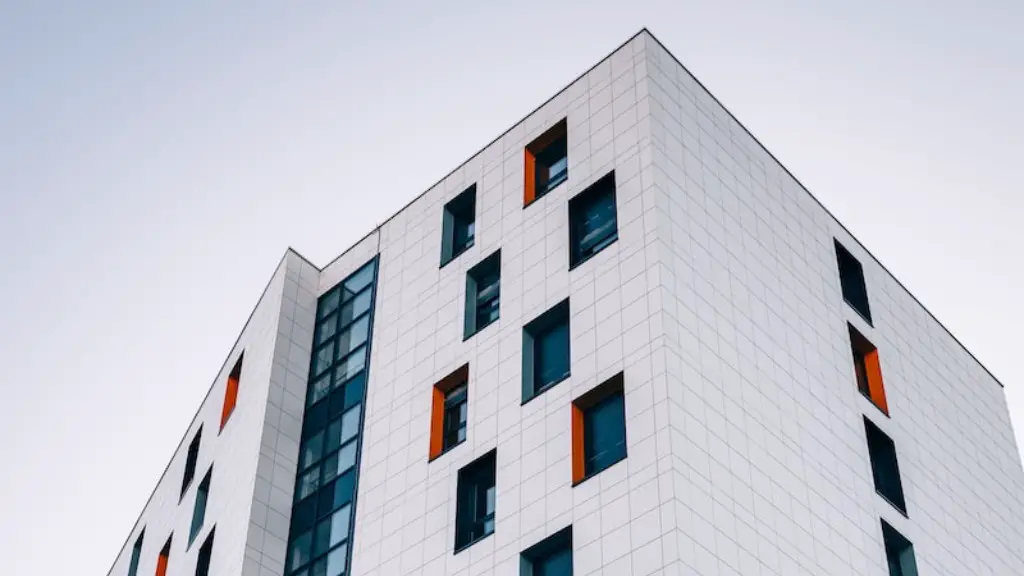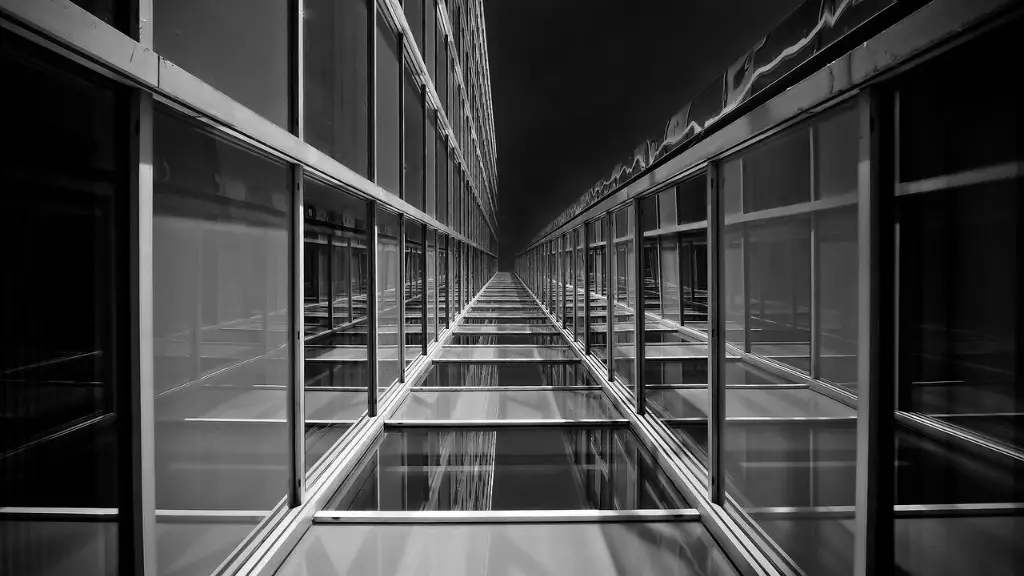Applications of Geometry in Architecture
Geometry is an integral part of the world of architecture. It manifests itself in the simplest of everyday forms and can be observed with a closer look at buildings, cities, and monuments. The use of geometry is fundamental in architecturally defining and constructing a sustainable and aesthetically pleasing structure. It is important to understand the fundamentals of geometry and its application in regards to architecture.
Geometric principles allow architects to plan and design buildings that will have the necessary structural integrity. When combined with other mathematical principles, engineers can engage in the manipulation of shapes and sizes and create new forms. These forms must meet the standards of safety, practicality, sustainability, and aesthetic appeal.
The use of geometric shapes is fundamental for any building. The use of circles, squares, triangles and other shapes can help create the overall form and strength needed for the success of any construction project. It is important to use the correct combinations and arrangements of shapes in order to create the desired effect.
The application of geometry also helps to define a building’s visual appeal. Geometric shapes can be used to create proportion, balance and harmony. The careful arrangement of shapes to fill a space, can be used to create particular effects or even emphasize certain characteristics, such as openings and other areas.
Moreover, geometry is used to create strong structural frameworks. Architects and engineers use geometric principles to create strong structural foundations, frames, and support structures. This helps ensure that a building is safe and structurally sound. Geometry is used to plan out the load-bearing points and other critical components of a structure.
Geometry is also used to map out the dimensions of a structure; the length, width and height of a building must all be carefully taken into account. The correct proportions must be used in order to create the desired aesthetic and structural integrity. Geometry can also be used to determined the spacing between supporting walls, columns, and beams.
Unique Design Possibilities
Geometric shapes and principles also provide a range of unique design possibilities. Complex shapes can be created from combinations of two-dimensional and three-dimensional shapes, forming a variety of interesting and visually appealing designs. Architects use geometry to create visual illusions, by manipulating the perception of space and volume.
The design possibilities are limitless, and architects can use geometry to bring out their creative side. Using geometry, potential opportunities for creative forms and designs can be realised, adding unique charm to projects. Geometry is a powerful tool when used correctly in architecture, and its applications can help to create amazing buildings and structures.
Geometry is an incredibly important element of architecture. It has the capability to make or break a structure, and it is imperative to use the correct principles when designing a building. Geometry can help create strong and aesthetically pleasing buildings by providing the tools to achieve this.
Building Efficient Structures
The use of geometry can help create structures that are more efficient, stronger and aesthetically pleasing. Utilizing the 3-Dimensional grid or creating curved forms which offer less surface area can reduce the amount of materials used while also creating structures that are much more resistant to different levels of stress.
Geometric principles also provide architects with a means of creating solutions that are both functional and aesthetic. Geometric shapes are used to create spatial patterns, strong frames and other criteria which holds the primary structure together. By designing smarter buildings and buildings that use fewer materials, architects become cost efficient, which can minimize the impact on investment costs.
By understanding the various applications of geometry, an architect can make more informed decisions on how to design buildings which are both aesthetically pleasing and functionally sound. Architects must always consider the application of geometric principles in all of their designs for better building constructions.
Designing to Last
The use of geometry plays a huge role in allowing structures to last over time. Architects must use the correct geometric principles to ensure the building is resistant to wear and tear, natural disasters, and changing weather conditions. Geometric principles must be used when designing structures to ensure they are stable, durable and can handle any harsh conditions they may encounter.
Geometry also helps in positioning buildings securely on the ground. By paying attention to the geometric shapes of a building, architects can ensure that it is positioned in an appealing and stable way.
Geometry can also be used to create unique and natural looking spaces, adding charm and character to the structure. By taking the time to study and understand the different applications of geometry, an architect can use the principles of geometry to create a structure that is both beautiful and enduring.
Meeting Regulations and Codes
Certain regulations and codes must be followed in order for a building to be approved for use. Geometry is a powerful tool when used correctly as it allows an architect to create a design which meets the requirements of local, state and federal regulations.
Geometry helps architects to determine how a building must be constructed in order to be safe and meet the regulations and codes set by the relevant authorities. This helps to ensure that the building is structurally sound and can handle the stresses of usage without any issues.
Environmental Benefits
The application of geometry can help to create structures that are environmentally friendly. For example, by using the principles of geometry, architects can create structures that make efficient use of materials, reducing waste, and creating buildings that are sustainable and environmentally friendly.
Geometric principles can also be used to create structurally effect structures, reducing the costs of maintenance and repairs over the years and helping increase the overall life cycle of the structure.
Geometry is a powerful tool when used in architecture and can create structures that are both appealing and sustainable. Understanding the different applications of geometry can help architects create beautiful, efficient and reliable structures.
Conclusion
By understanding the various applications of geometry, architects are better prepared to design and build aesthetically pleasing, functional and sustainable structures. Geometry is an incredibly powerful tool when used correctly and provides a range of possibilities for architects to create unique and lasting designs. Geometry is a fundamental part of architecture and its importance should never be underestimated.





